In Kyoto, the intertwining of history and spirituality is vividly illustrated through Kiyomizu-dera, Fushimi Inari Taisha, and the Gion Geisha District. Kiyomizu-dera stands as a monument to architectural brilliance, offering panoramic vistas that inspire contemplation. Meanwhile, the vermilion torii gates of Fushimi Inari Taisha create an enchanting pathway beckoning visitors to explore deeper. Gion, with its traditional wooden machiya houses, invites onlookers to glimpse a world where time seemingly stands still. Yet, amidst these wonders, the question remains: what hidden gems lie within the heart of Kyoto waiting to be uncovered?
Tour Overview and Pricing
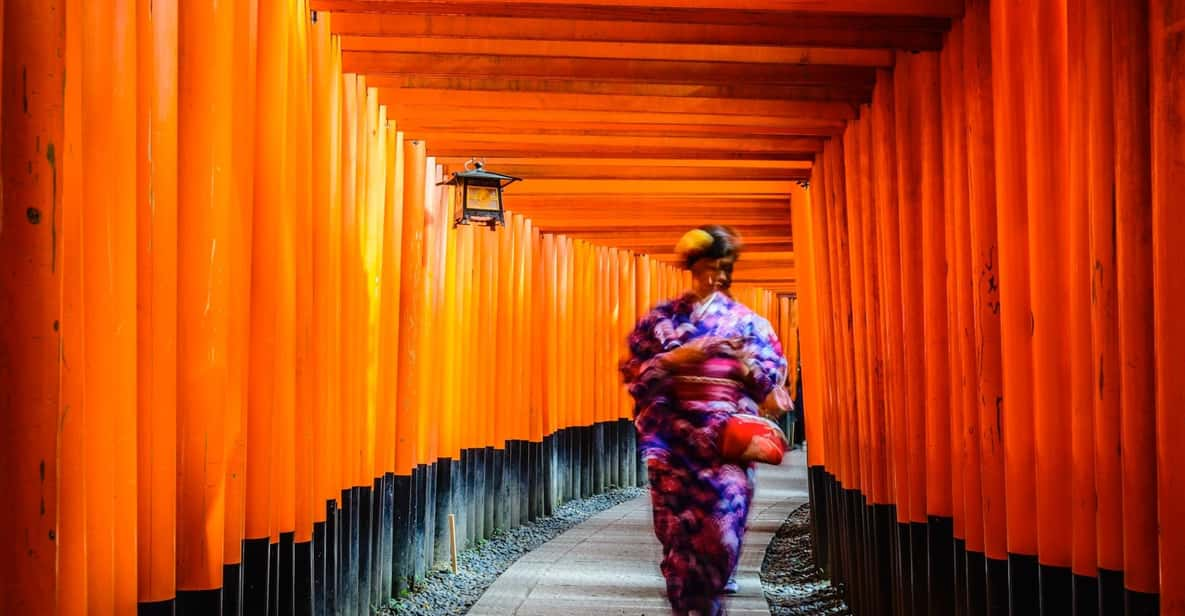
When exploring the enchanting sites of Kyoto, participants can join a half-day private walking tour that promises an enriching experience. Priced from $83.35 per person, this four-hour adventure allows travelers to enjoy the city’s rich culture and history.
With a convenient reserve now and pay later option, planning is a breeze. Plus, participants can enjoy the flexibility of free cancellation up to 24 hours in advance for a full refund, ensuring peace of mind.
While the tour offers an engaging exploration, it’s crucial to recognize that it may not be suitable for individuals with mobility impairments, wheelchair users, or those over 75 years old.
This tour sets the stage for unforgettable memories in Kyoto.
It's also worth checking out some other tours and experiences nearby.
Itinerary Highlights
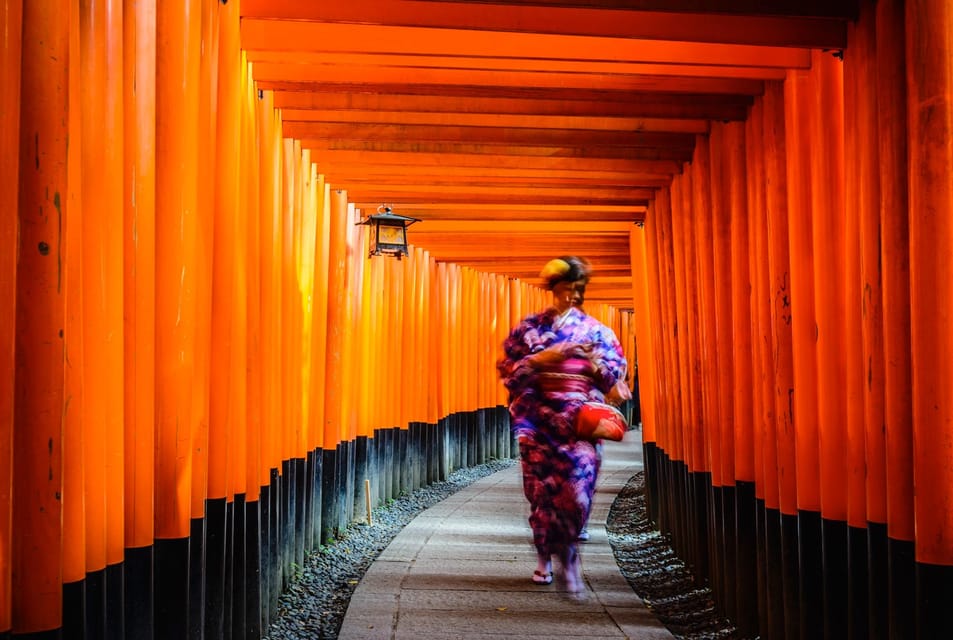
Kyoto’s enchanting itinerary offers a blend of historical significance and breathtaking scenery that travelers won’t want to miss.
Starting at the 7-Eleven near JR Kyoto Station, the journey unfolds with a guided tour of Fushimi Inari Taisha. Guests marvel at the thousands of iconic vermilion torii gates, learning about the shrine’s ancient origins and Shinto significance.
Following this, they explore Kiyomizu-dera, a UNESCO World Heritage site rich in spiritual power, known for its associations with love, longevity, and academic success.
A leisurely walk through the traditional streets of Ninenzaka and Sannenzaka leads to the vibrant Gion District, where visitors can soak in the atmosphere of this renowned geisha area, complete with charming shops and teahouses.
Fushimi Inari Taisha
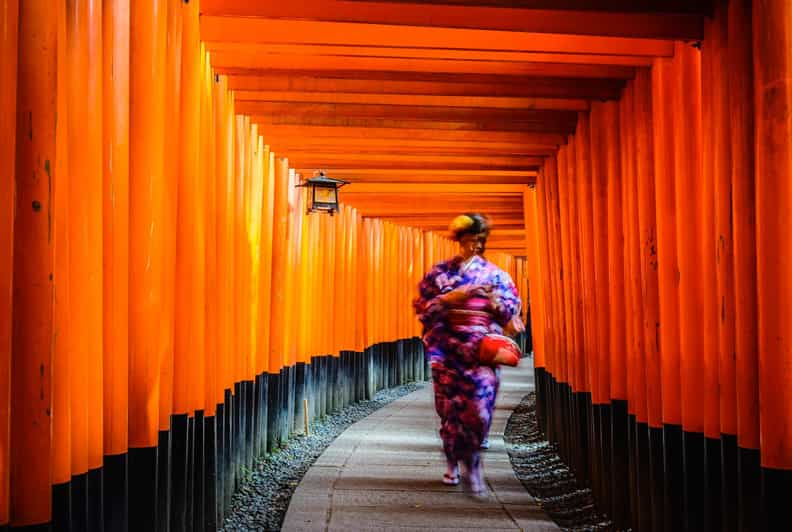
Fushimi Inari Taisha captivates visitors with its stunning array of thousands of vermilion torii gates, creating a mesmerizing pathway that winds through the sacred Mount Inari.
This Shinto shrine, dedicated to Inari, the deity of rice and agriculture, holds immense cultural significance and dates back to the 8th century. As visitors ascend the mountain, they’ll encounter smaller shrines and offerings, enhancing the spiritual atmosphere.
The vibrant gates, donated by individuals and businesses, symbolize prosperity and good fortune. Each gate bears the name of its donor, fostering a sense of community.
Whether exploring the trails or simply soaking in the breathtaking views, Fushimi Inari Taisha offers a unique experience that connects visitors to Japan’s rich heritage and natural beauty.
Kiyomizu-dera Experience
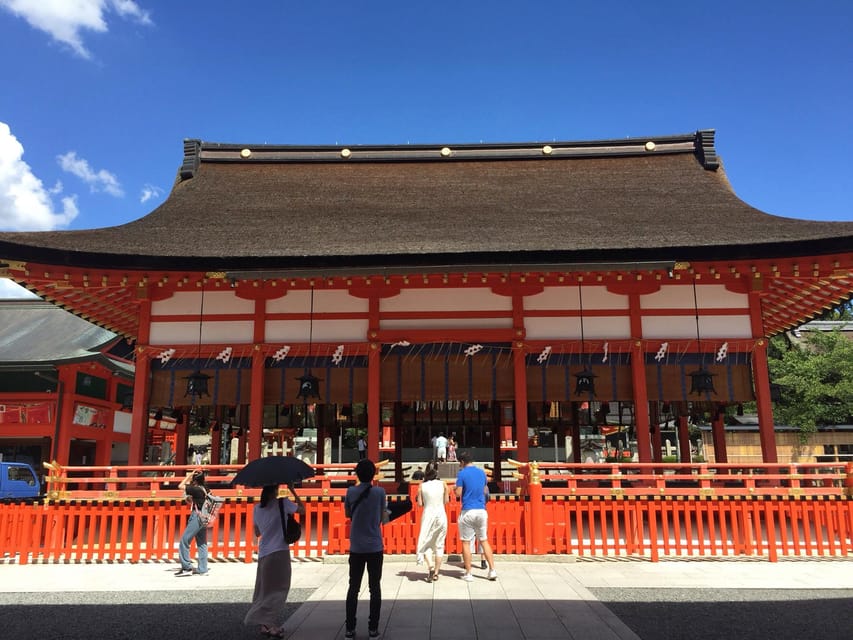
Nestled within the scenic hills of Kyoto, Kiyomizu-dera stands as a remarkable symbol of Japan’s architectural and spiritual heritage. This UNESCO World Heritage site offers visitors a unique experience, blending breathtaking views with rich cultural significance. Tourists can explore its vibrant history while enjoying the tranquil atmosphere.
| Feature | Details |
|---|---|
| Entry Fee | 500 yen (approx. $3.10) |
| Guided Tour Duration | 80 minutes |
| Spiritual Significance | Love, longevity, academic success |
| Architecture Style | Wooden structures, traditional |
| Accessibility | Not suitable for mobility impairments |
With knowledgeable guides leading the way, the Kiyomizu-dera experience promises insights into its ancient origins and the spiritual power it holds for many visitors.
Exploring Ninenzaka and Sannenzaka
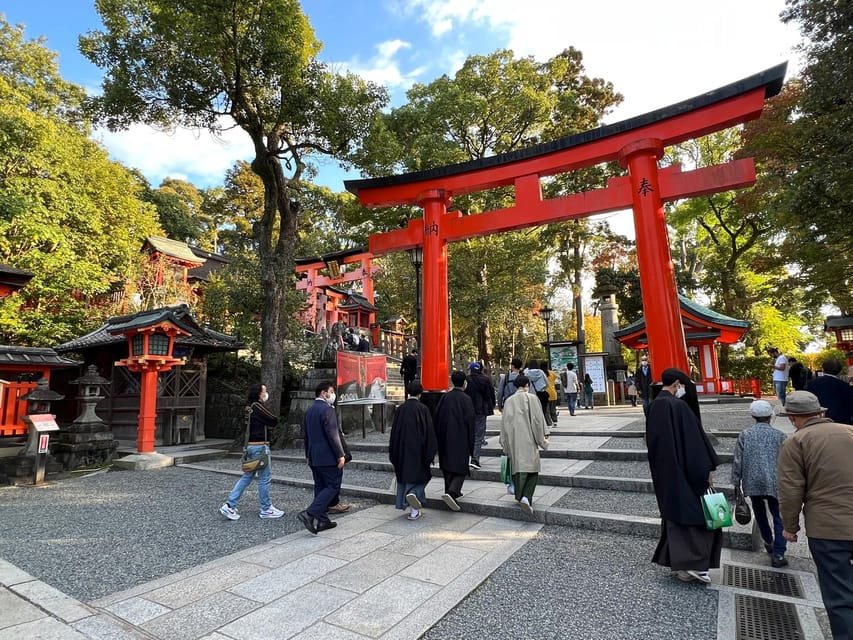
Amidst the charm of Kyoto, visitors can wander through Ninenzaka and Sannenzaka, two picturesque streets that showcase the city’s rich history and traditional architecture.
These sloping lanes are lined with wooden buildings, tea houses, and quaint shops selling local crafts and souvenirs. As they stroll, travelers can admire the beautifully preserved structures, which evoke a sense of stepping back in time.
The streets are particularly enchanting during cherry blossom season when the trees bloom, creating a stunning backdrop. Visitors often pause at various viewpoints to capture the essence of Kyoto’s heritage.
Ninenzaka and Sannenzaka not only offer a glimpse into the past but also provide a perfect setting for soaking up the serene atmosphere and vibrant culture of the city.
Discovering Gion District
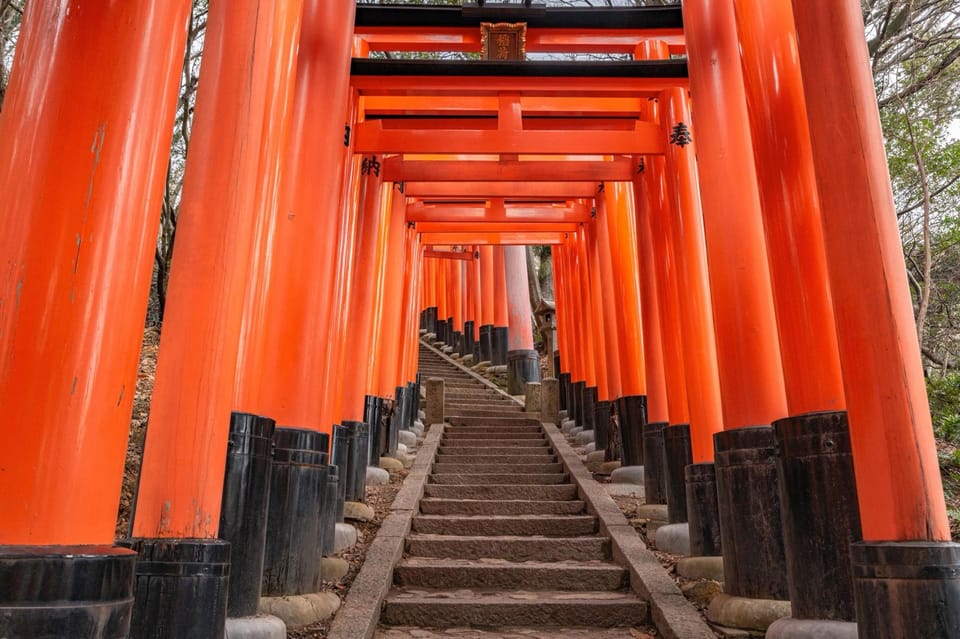
As visitors leave the enchanting streets of Ninenzaka and Sannenzaka, they find themselves in the renowned Gion District, a vibrant hub of Kyoto’s traditional culture.
Known for its historic wooden machiya houses, Gion offers a glimpse into Japan’s past. Visitors stroll along Hanamikoji Street, where elegant teahouses and shops line the way, inviting them to experience the art of the geisha.
At dusk, the soft glow of lanterns illuminates the streets, enhancing the district’s charm. Gion’s rich heritage is palpable, with the melodic sounds of shamisen echoing from nearby establishments.
For those lucky enough, spotting a geisha or maiko on their way to an appointment becomes a memorable highlight of their Kyoto adventure.
Transportation and Costs
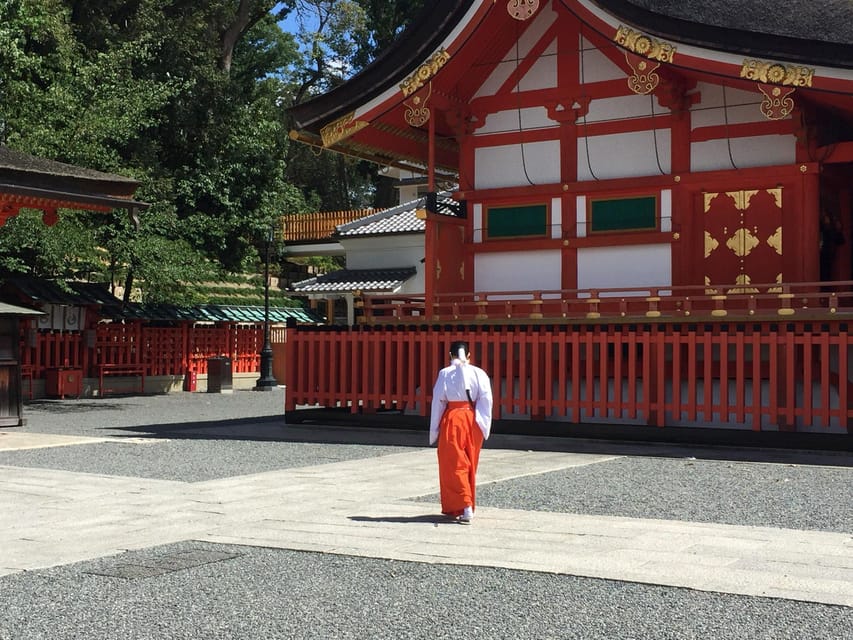
Maneuvering Kyoto’s attractions is both efficient and cost-effective, thanks to the city’s reliable public transportation system.
Visitors can easily navigate the city using trains and buses, making it simple to reach iconic sites like Kiyomizu-dera and Fushimi Inari Taisha.
The guided tour includes no entry fee for Kiyomizu-dera, with a small cost of 500 yen (approximately $3.10) for the visit and an additional 500 yen for public transport.
This keeps overall expenses low while allowing travelers to enjoy Kyoto’s culture and history.
However, it’s essential to recognize that the tour may not be suitable for individuals with mobility impairments or those over 75 years.
With these options, everyone can enjoy Kyoto’s rich heritage without breaking the bank.
Customer Reviews and Feedback
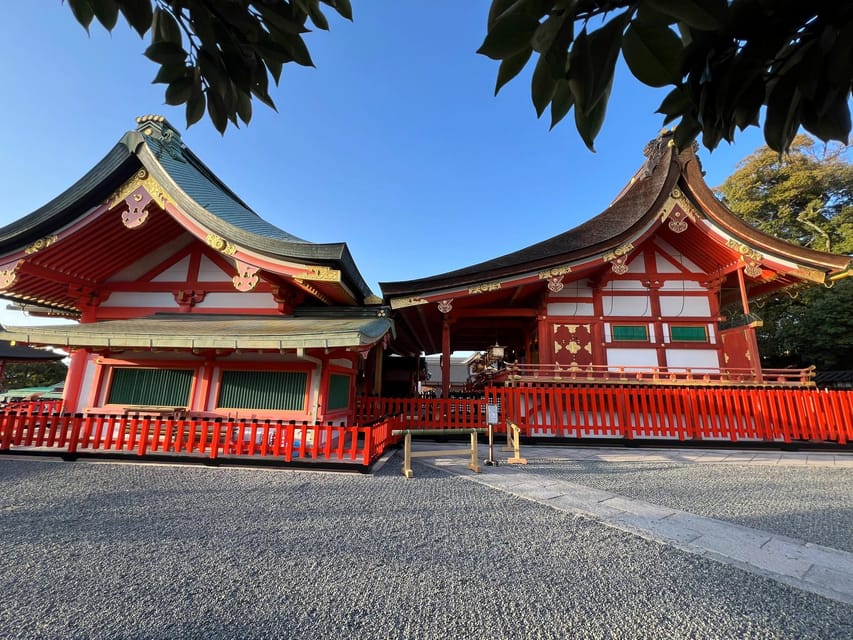
While exploring Kyoto’s attractions, many visitors share their positive experiences, highlighting the exceptional quality of the guided tours.
With an impressive overall rating of 5/5 from 15 reviews, travelers frequently commend the knowledgeable guides who create personalized experiences. Reviewers appreciate the assistance provided during travel issues, ensuring a smooth adventure.
Couples, friends, solo travelers, and families all find value in these tours, making them a popular choice for various groups. Significantly, guide Roberto receives special mentions for his outstanding service and support throughout the tours.
Visitors leave with enriched knowledge of Kyoto’s history and culture, making the tours not just enjoyable but also educational. The feedback reflects a deep satisfaction with the experience offered.
Here's a few more nearby tours and experiences we think you'll like.
Frequently Asked Questions
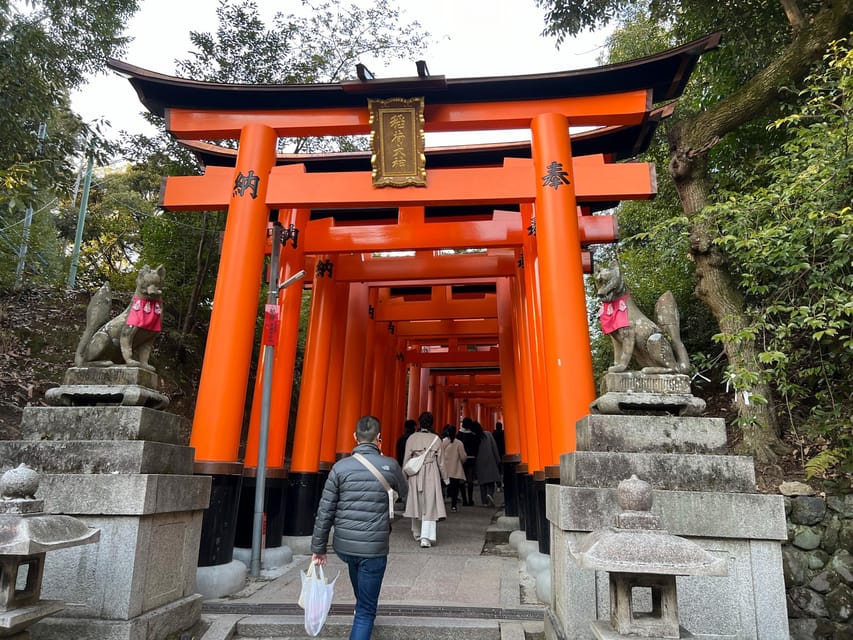
What Should I Wear for the Walking Tour?
For the walking tour, she recommends wearing comfortable shoes suitable for walking, breathable clothing for varying weather, and a light jacket. Sunscreen and a hat could also help protect against sun exposure during the tour.
Are There Restrooms Available During the Tour?
During the tour, restrooms are available at various stops. The guide guarantees participants know these locations, making it convenient for everyone. Travelers appreciate the thoughtful arrangements, enhancing their overall experience without interruptions.
Can I Bring My Pet Along?
The guide informs travelers that pets aren’t allowed on the tour. They recommend arranging pet care during the tour to guarantee a smooth experience while enjoying the sights and learning about the local culture.
Is Food Included in the Tour?
The tour doesn’t include food, but participants can explore local cuisine during breaks. Guides often recommend nearby eateries to enhance the experience, ensuring everyone enjoys the culinary delights unique to the area.
How Do I Contact the Tour Guide if Needed?
To contact the tour guide, participants should reach out via the provided email or phone number listed in their confirmation details. They can expect prompt responses for any questions or assistance needed during the tour.
Not for you? Here's more of our most recent tour reviews happening neaby
- Kyoto Experience With a Local Certified Guide
- From Osaka/Kyoto: Kyoto UNESCO World Heritage Sites Day Tour
- From Osaka/Kyoto: Amanohashidate & Miyama Village Day Tour
- ◎Kyoto via Shirakawa-Go Bus Transportation From Takayama
- Experience the Art of Japanese Calligraphy at Myoshinji
- Kyoto: Lovely Experience・Learn the Essence of Ikebana
- Kyoto: Private Outdoor Photoshoot
- Kyoto Kiyomizu Temple : Maiko and Samurai Couple Photoshoot
- From Kyoto: Ninjas Homeland Electric Bicycle Private Tour
- Kyoto: Japanese Music Concert and Music Class Experience
- Kyoto Modern Architecture Tour: Sanjo Area W/ Afternoon Tea
- Kyoto:Explore & Create Your Own Traditional KYOMARU UCHIWA
- Kyoto: 100% Private Custom Tour (4/8 Hrs)
- Kyoto:Sushi-rolls Making Experience
- Kyoto: 12 Top Highlights Full-Day Guided City Tour
Recap
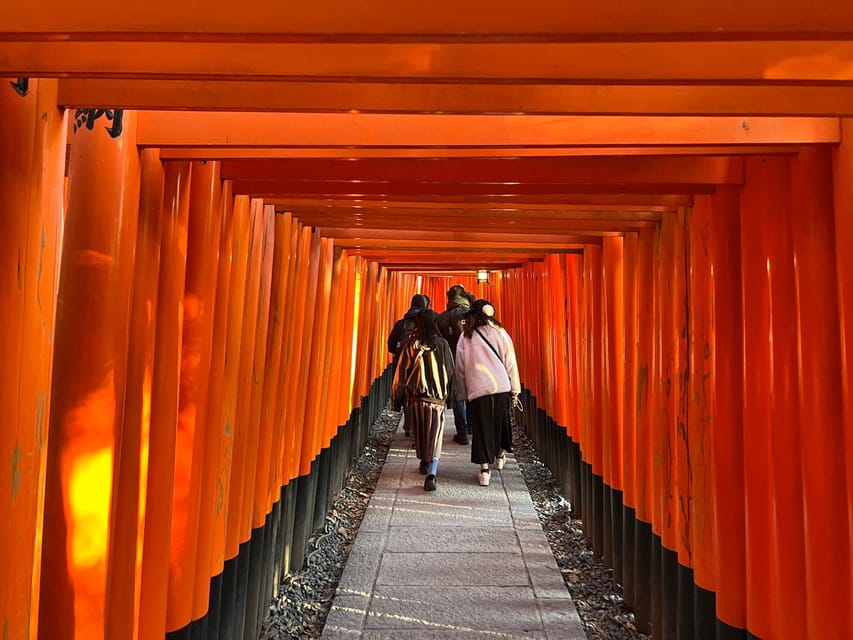
To sum up, Kyoto’s enchanting sites—Kiyomizu-dera, Fushimi Inari Taisha, and the Gion Geisha District—offer a fascinating blend of history, culture, and breathtaking views. Visitors can enjoy the spiritual ambiance of Kiyomizu-dera, wander through the iconic torii gates of Fushimi Inari, and explore the traditional charm of Gion. Each experience leaves lasting memories, making Kyoto a must-visit destination for anyone seeking to discover the heart of Japan’s cultural heritage.
